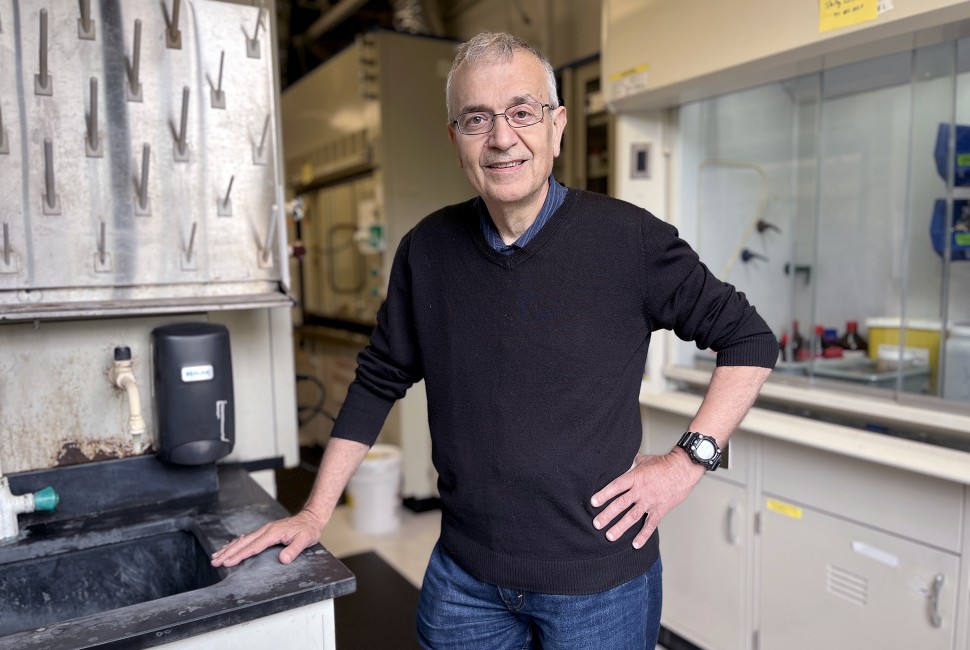Mercouri Kanatzidis, an inorganic chemist at Northwestern University, has received an unusual honor: a new mineral discovered in Hungary has been named after him, the International Mineralogical Society (IMA) announced recently.
The mineral, a chalcogenide, is called kanatzidisite in recognition of Kanatzidis’ significant contributions to chalcogenide chemistry. The mineral was found in the Nagybörzsöny deposit at Alsó-Rózsa, Hungary, and now is in the collection of the Museo di Storia Naturale, Università di Firenze, Florence, Italy. Its chemical formula is (SbBiS3)2Te2.
“I am deeply honored to have a new mineral named after me, kanatzidisite, symbolizing the remarkable diversity and wonders of the Earth's geological treasures,” Kanatzidis said. “Currently, kanatzidisite is rare, but I hope that larger deposits will be found as geologists gain a better understanding of where to look.
“I also hope that kanatzidisite serves as an inspiration for future generations of scientists and explorers, encouraging them to delve deeper into the mysteries of nature and uncover and create even more extraordinary minerals. Who knew my love for minerals would lead to this? I guess I can now proudly claim that I have a 'rock-solid' legacy in the field of geology!”
Kanatzidis is the Charles E. and Emma H. Morrison Professor of Chemistry in the Weinberg College of Arts and Sciences. He has a joint appointment at Argonne National Laboratory.
Chalcogenides are compounds containing at least one chalcogen elemental ion and at least one metallic element. Kanatzidis’ research has generated seminal work in synthetic metal chalcogenide chemistry and the development of new functional chalcogenide materials. Applications of these materials include solar cells, X-ray and gamma ray detector materials, topological quantum materials and highly efficient thermoelectric materials.
The IMA is the organization responsible for officially approving and naming minerals. The process of having a mineral named after a scientist usually involves the discovery of a new mineral or a significant contribution to the understanding of a previously known mineral. Guidelines and criteria need to be met before a mineral can be named after a person, including the submission of a formal proposal with detailed scientific information and evidence.


